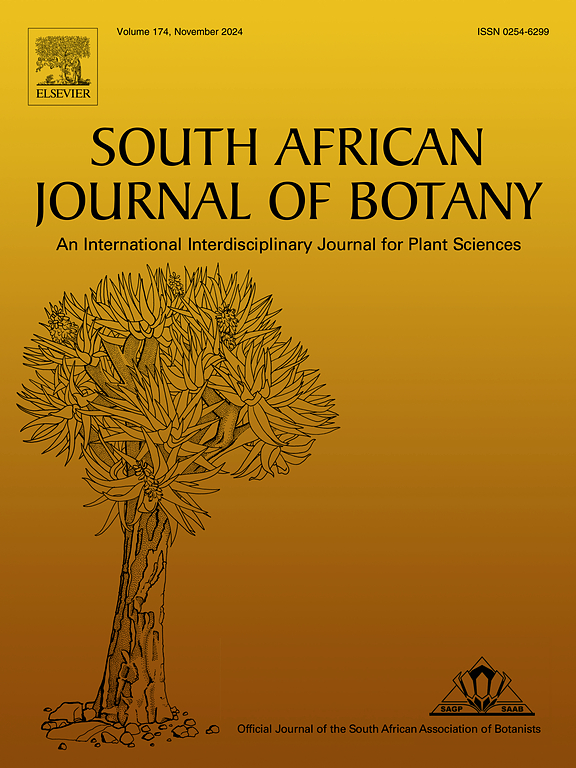Metabolite profiling of Cucurbita pepo L. in relation to its potential to combat experimental trichinosis
IF 2.7
3区 生物学
Q2 PLANT SCIENCES
引用次数: 0
Abstract
This study aimed to evaluate Cucurbita pepo L. (C. pepo) seed extract against Trichinella spiralis (T. spiralis) through in vivo study for both intestinal and muscular phases. Additionally, an extensive metabolic profiling, for all parts of the fruit of Cucurbita pepo L. (seed, peel and flesh), was adopted using UPLC/ESI-qTOF-MS to reveal the phytoconstituents responsible for the biological activities.
Regarding the anthelmintic evaluation of the extracts of C. pepo, the count of T. spiralis adult worm was significantly reduced in the group of mice treated early with C. pepo seed extract (CPSE) and albendazole (ABZ) as compared to the control infected non-treated group. Similarly, the total larval count was significantly reduced in groups treated with CPSE and ABZ with more reduction in the groups that received the treatment in the early phase of infection. Upon staining intestinal sections of the infected mice with haematoxylin and eosin, the analysis revealed the improvement of the inflammatory manifestation induced by the parasite upon treatment with CPSE in both the intestinal and muscular phases. UPLC/ESI-qTOF-MS technique enabled the identification and comprehensive profiling of 79 secondary metabolites, which belonged to various classes of compounds including flavonoids, phenolics, cucurbitacins and fatty acids, in addition to other minor classes.
The current study suggests C. pepo seed extract as a promising candidate for management of the gastrointestinal parasites being enriched with bioactive phytoconstituents.
瓜类植物代谢谱与抗实验性旋毛虫病的关系
本研究旨在通过肠道和肌肉两个阶段的体内实验,评价葫芦籽提取物对旋毛虫(Trichinella spiralis, T. spiralis)的抑制作用。此外,采用UPLC/ESI-qTOF-MS对瓜类果实(种子、果皮和果肉)进行了广泛的代谢谱分析,揭示了瓜类果实中与生物活性有关的植物成分。在驱虫效果评价方面,与未处理的对照组相比,早期给予山茱萸种子提取物(CPSE)和阿苯达唑(ABZ)处理的小鼠螺旋绦虫成虫数量明显减少。同样,CPSE和ABZ治疗组的幼虫总数显著减少,在感染早期接受治疗的组减少更多。用血红素和伊红染色感染小鼠的肠道切片,分析发现CPSE在肠道和肌肉阶段均改善了寄生虫引起的炎症表现。UPLC/ESI-qTOF-MS技术鉴定了79种次生代谢物,并对其进行了综合分析,这些次生代谢物属于黄酮类化合物、酚类化合物、葫芦素类化合物、脂肪酸类化合物以及其他小类化合物。目前的研究表明,番荔枝种子提取物富含生物活性植物成分,是一种很有希望用于胃肠道寄生虫管理的候选植物。
本文章由计算机程序翻译,如有差异,请以英文原文为准。
求助全文
约1分钟内获得全文
求助全文
来源期刊

South African Journal of Botany
生物-植物科学
CiteScore
5.20
自引率
9.70%
发文量
709
审稿时长
61 days
期刊介绍:
The South African Journal of Botany publishes original papers that deal with the classification, biodiversity, morphology, physiology, molecular biology, ecology, biotechnology, ethnobotany and other botanically related aspects of species that are of importance to southern Africa. Manuscripts dealing with significant new findings on other species of the world and general botanical principles will also be considered and are encouraged.
 求助内容:
求助内容: 应助结果提醒方式:
应助结果提醒方式:


